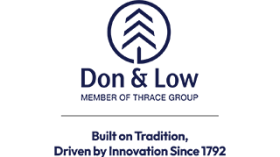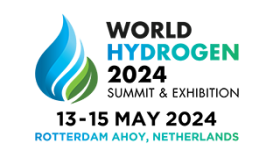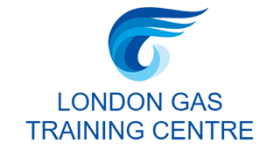Sue Robb of 4Children talks to Julie Laughton and Alison Britton from the Department for Education about the role of childminders in delivering the 30 hours free entitlement.
Making the case for efficient motoring skills
 Things change. The pace of change on our roads is continuous. As a professional driver it is important to know and understand these changes. We all need refreshing on the knowledge and skills we already have.
Things change. The pace of change on our roads is continuous. As a professional driver it is important to know and understand these changes. We all need refreshing on the knowledge and skills we already have.
Businesses consider value for money and miles per gallon when they buy new company vehicles, but the answer to high fuel costs is not just in fuel-efficient cars; it’s in the person behind the wheel. It’s time to make sure that fleets are being driven correctly. Drivers who spend long hours driving to meetings with clients and colleagues get fined and crash more often than other drivers due to a riskier driving style.
Too often, large fleets suffer significant losses due to poorly trained drivers. Yet sending out safer, more confident and fuel‑efficient drivers, is well worth the investment.
Some firms still believe they are covered for accidents as long as their drivers hold a current driving licence and their vehicles have insurance and MOT – a blinkered way of looking at road safety that doesn’t comply with the law. The risks must be managed.
RISK MANAGEMENT
One solution to this is Driver Risk Management (DRM). DRM saves money because the costs of road accidents are nearly always higher than the costs of repairs and insurance claims. These costs are higher for smaller businesses and the self-employed, so whatever the size of the business, it makes financial sense to invest in a DRM strategy.
Simon Elstow, Training Manager at the IAM said: “Fortunately, many businesses now see the link between improving the driving skills of their employees and squeezing every drop of fuel and safety from their fleet.
“Skilled and trained drivers have a better attitude and look after their vehicles more carefully. With less wear and tear to the engine, tyres and brakes, the vehicles are worth more when they are sold on.”
An online driver risk assessment is the first step in assessing driving skills. It helps profile individual risks and proposes ways to tackle them. Each driver gets a personal skills programme that gives an audit trail and meets health and safety legislation.
Some drivers may not need coaching while they drive and may be more suited to online e-learning courses. These are tailored to individuals and are a refresher for understanding good road craft and driving regulations.
For drivers who are judged as high-risk, hands-on training in real-life situations – with a qualified trainer – is best. Make sure your trainers are approved by the Driving Standards Authority and listed on their fleet trainer register.
Elstow said: “The economic case and safety needs for driver training are proven but there are other less measurable benefits like having a workforce of happier, more alert and confident drivers who feel the company is investing in them.”
GREEN DRIVING: THE METHOD
Hurtling down the M1 and stopping and starting abruptly puts a lot of stress on the engine and tyres, and it also burns a lot of fuel. Going easy on the accelerator to maintain a constant speed – with gentler starting and stopping – is one way to save money. You’ll use the brakes less often, making for a safer drive. It’s a tip that works for any driver in any vehicle.
Choosing the right speed – of course within the limits – improves fuel efficiency and road safety. For example, on a straight road where the national speed limit is in force, 50mph is the optimum speed for fuel efficiency.
Improving driver observation, anticipation and awareness increases safety and again reduces the cost for fuel and maintenance. It helps keep the car on the move – more fuel is used starting off and braking.
Aim to get your staff into the habit of accelerating gradually to the most fuel‑efficient speed while looking ahead. There’s no point accelerating into a red light or traffic queue. Anticipating junctions and lights will also reduce the amount of time they stopping with the engine still running.
Most courses will get drivers into the habit of checking their vehicles frequently. They’ll learn the fuel-efficient importance of keeping oil levels and tyre pressure right – properly inflated tyres alone improve fuel efficiency by between five and ten per cent. Drivers will also learn to check brakes, lights and safety equipment and they’ll spot damage early.
DRIVING EFFICIENTLY
To drive efficiently means to avoid the spikes in performance that telematics is designed to record such as harsh braking, steering, accelerating, idling and, most importantly, inappropriate speed which can normally be mapped to show where it’s unnecessary or excessive.
In general, efficient driving means knowledge of all the vehicles systems e.g. retarders on trucks/busses to make best use of the vehicle. On all vehicles, the drivers should aim to keep moving; change gear early; choose best cruising gear; lift off accelerator early; switch off when safe; and avoid any unnecessary acceleration.
The mapping device measuring driver inputs is called telematics, and the device is set to ‘normalised’ in order to look for ‘spikes’. Eco driving is all about ironing out spikes in the driving performance. The Cambus (part of the electronic brain of the engine) already records a great deal of input information. The telematics system adds mapping, speed and body roll (activation of ROP and ESP systems etcetera).
Generally when talking about telematics driving efficiently with fleet drivers, there are a few questions you might use to explore this. Do you know what your telematics system is measuring (and how accurately), and do you know how to use all the systems on your new vehicle to their optimum?
Find out how your vehicle lets you know when you are driving efficiently, and what feedback your organisation gives. Ask yourself: what is your organisation’s policy regarding idling, and do you know how much idling costs your organisation per year? Do you know what the added effect to the environment idling makes (tonnes of CO2 per annum? Finally, do you know what your telematics system is measuring (and how accurately)?
If an organisation fits telematics it needs to match the general culture, for instance if it normally tells drivers about new initiatives it’s best to do the same in this situation. Generally telematics are very good at comparing one driver to another to encourage “best practice” modelling but often only where the organisation compares like routes/rosters and provides on road training where appropriate.
The drawback about telematics is that they are obviously not recording the context of the spike (which is why in cab cameras are increasingly combined). Therefore, it’s important to take the time to ask some questions to understand why a particular driver appears to be driving inefficiently/unsafely.
Some reason for spikes might be outside of the driver’s control. If a driver takes a new route, the trailer or rig is configured wrongly, or he or she has a new vehicle, this can all contribute to telematics showing spikes. Therefore, most often there is a need to look closer to what is causing the spikes.
Elstow said: “Occasionally, we have worked with organisations who had installed telematics and found that their staff were inadequately informed about the scope and accuracy of the system (sometimes deliberately). This results in confusion.”
IDLING
The policy on vehicle idling is different for different organisations. Idling happens when the vehicle is stopped and the engine is still running. Generally, it’s recommended to switch off the engine if you don’t need to drive off within the next one minute given that it is safe to do so. That’s usually the case in queues in heavy traffic, when waiting to tip, when stopping to ask directions, when stopping in heavily pedestrianised areas to show intent to give up priority and in housing areas (especially at night or early morning).
However, there are situations when it’s actually better to avoid switching off. For instance, in queues of light traffic where you need to take advantage of gaps or where on board ancillary equipment is vulnerable to prolonged switch off. For the latter, you should avoid housing estates to park up near. L
FURTHER INFORMATION
www.iam.org.uk
www.iamdriveandsurvive.co.uk
Company Focus
Founded in 1792, Don & Low began as a small woven textiles manufacturer in Scotland, gradually expanding its operations and diversifying its production capabilities over the years. Through strategic investments in technology and a relentless pursuit of quality, Don & Low has evolved into a leading vertically integrated manufacturer, specialising in the production of construction membranes, geotextiles, and industrial textiles & yarns.
Event Diary
UKREiiF has quickly become a must-attend in the industry calendar for Government departments and local authorities.
The multi-award-winning UK Construction Week (UKCW), is the UK’s biggest trade event for the built environment that connects the whole supply chain to be the catalyst for growth and positive change in the industry.
The organisers of the world’s largest dedicated hydrogen event, World Hydrogen 2024 Summit & Exhibition have announced it’s return to Rotterdam in May 2024, with an expansion of a whole extra summit day. Sustainable Energy Council (SEC) are partnering with the Government of the Netherlands, the Province of Zuid-Holland, the City of Rotterdam, and the Port of Rotterdam to host an extended, larger scale Summit in 2024, to expand the event to meet the surging demand.
Supplier Profiles
Neat Seats
Neat Bins, Part of Neat Seats Ltd is a company that specialises in cleaning all your wheeled bins
Would you like to become a Gas Safe Engineer, Electrician or a Renewable engineer.
Let us show you the way…….
Latest Features
Professor Harith Alani, director of the Knowledge Management Institute at the Open University explains how AI can be used for good and bad.
Alex Lawrence, head of health & social care, techUK sets out techUK’s Five Point Plan for CareTech.












